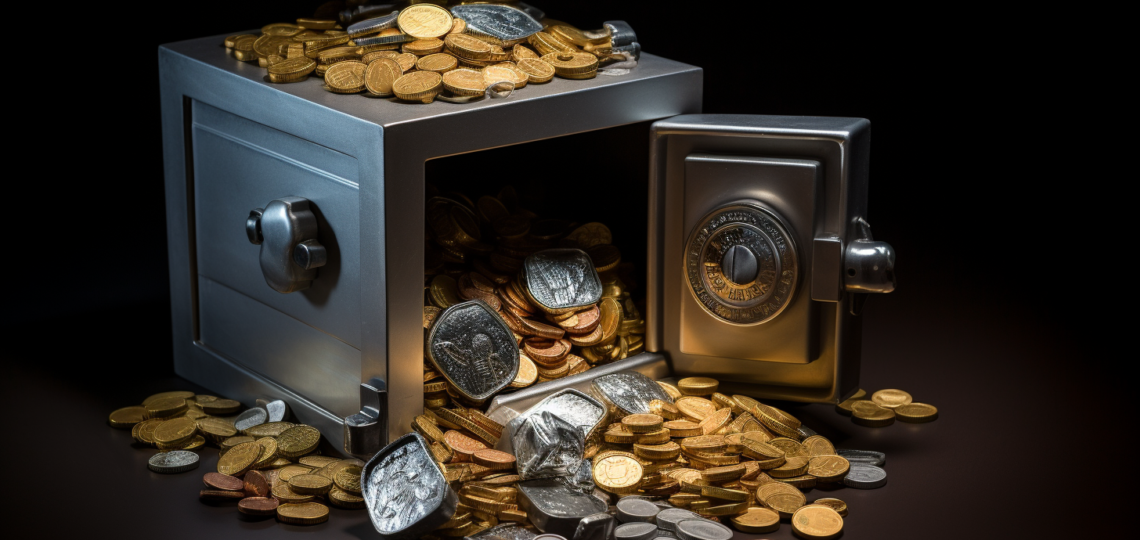Are you looking to safeguard your business from unforeseen risks? One of the most crucial steps in protecting your business is securing the right insurance coverage. By identifying potential risks, choosing the appropriate types of insurance, and assessing your coverage needs, you can ensure that your business is well-protected.
Finding a reliable insurance provider like Biscayne Risk & Insurance Group who understands your industry and business requirements is essential. Understanding policy terms and conditions will help you make informed decisions about your coverage. Regularly reviewing and updating your insurance plan as your business evolves is key to maintaining adequate protection.
In this article, we will discuss how you can protect your business with insurance by following these important steps.
Identifying Potential Risks
It’s crucial to identify potential risks in order to protect your business with insurance. By recognizing the various threats that could impact your operations, you can take proactive steps to mitigate their impact.
Start by evaluating your business activities, such as location, industry, and size, to determine where vulnerabilities may lie. Consider factors like natural disasters, theft, cyber attacks, or liability claims that could harm your business financially.
Conduct a thorough risk assessment with key stakeholders to ensure all areas of concern are addressed. Understanding these risks will help you select the appropriate insurance coverage tailored to your specific needs and reduce the chances of unexpected financial losses impacting your business.
Types of Insurance Coverage
Having the right coverage is essential when safeguarding your company from unexpected risks. There are various types of insurance coverage to consider, each serving a specific purpose in protecting your business. Here are four key types of insurance you should consider:
- General Liability Insurance: This type of coverage protects your business from claims related to bodily injury, property damage, and advertising mistakes.
- Property Insurance: Property insurance helps cover damages to your physical assets like buildings, equipment, and inventory due to fire, theft, or other covered events.
- Business Interruption Insurance: This coverage assists in covering lost income and expenses if your business operations are disrupted due to a covered event.
- Workers’ Compensation Insurance: Required in most states, workers’ comp provides benefits to employees who suffer work-related injuries or illnesses.
Make sure you assess your business needs carefully and consult with an insurance professional to determine the best coverage for your specific situation.
Assessing Your Coverage Needs
To make sure you have the right coverage for unexpected risks, assess the specific needs of your company carefully. Begin by evaluating the nature of your business operations and identifying potential areas of vulnerability.
Consider factors such as the size of your workforce, the type of services you provide, and any unique risks associated with your industry. It’s important to review your current insurance policies to determine if they adequately protect against these risks or if additional coverage is necessary.
Consult with an insurance agent to discuss your findings and explore options for enhancing your protection. By taking a proactive approach to assessing your coverage needs, you can better safeguard your business from potential threats and uncertainties.
Finding the Right Insurance Provider
When looking for the right insurance provider, you should research different companies and compare their coverage options to ensure you find the best fit for your needs. Here are some tips to help you in your search:
- Check the financial stability of the insurance company to make sure they can fulfill their promises.
- Look for customer reviews and ratings online to get an idea of how satisfied clients are with their services.
- Consider meeting with insurance agents or brokers in person to discuss your specific needs and see if they can offer customized solutions.
- Don’t forget to inquire about any discounts or special packages that could potentially save you money while still providing adequate coverage.
By following these steps, you can find a reliable insurance provider that offers the protection your business deserves.
Understanding Policy Terms and Conditions
Understanding the terms and conditions of a policy is crucial in ensuring you’re fully aware of the coverage and limitations provided.
Insurance policies can be complex documents with legal language that may be difficult to understand. It’s important to carefully review each section, including the exclusions, deductibles, limits, and any specific requirements or obligations you must meet as a policyholder.
Pay close attention to how claims are handled, what events are covered, and under what circumstances the insurance will pay out. If there are any terms or clauses that seem unclear, don’t hesitate to ask your insurance provider for clarification.
Being knowledgeable about your policy will help you make informed decisions and avoid any surprises in the event of a claim.
Reviewing and Updating Your Insurance Plan
Review and update your insurance plan regularly to ensure you have the right coverage for your needs. As your business evolves, so do your risks.
It’s important to review your insurance policies annually or whenever there are significant changes in your operations, assets, or liabilities. Make sure to assess any new risks that may arise and adjust your coverage accordingly.
Additionally, keep an eye on market trends and new insurance products that could better protect your business. Don’t wait until it’s too late to discover gaps in your coverage – stay proactive by routinely reviewing and updating your insurance plan to safeguard against potential financial losses and legal liabilities.
Your business’s future success may depend on it!
Frequently Asked Questions
Can insurance protect my business from cybersecurity threats and data breaches?
Insurance can help protect your business from cybersecurity threats and data breaches by providing coverage for expenses related to investigating the breach, notifying affected parties, and restoring compromised data.
It can also offer liability protection in case of legal action resulting from a breach.
However, it’s essential to review your policy carefully to ensure you have adequate coverage for potential cyber risks that could impact your business.
How can I ensure that my insurance coverage will adequately protect my business in case of a natural disaster?
To ensure that your insurance coverage adequately protects your business in case of a natural disaster, you should review your policy to confirm it includes coverage for various types of natural disasters.
Consider factors like location and potential risks when selecting coverage limits.
Regularly update your policy to reflect any changes in your business or the risk landscape.
It’s crucial to communicate openly with your insurance provider to address any concerns or questions about your coverage.
Are there any specific insurance policies that cover employee lawsuits or disputes?
Yes, there are specific insurance policies that cover employee lawsuits or disputes.
Employment Practices Liability Insurance (EPLI) is designed to protect businesses from claims related to wrongful termination, discrimination, harassment, and other employment-related issues.
EPLI can help cover legal costs, settlements, and judgments resulting from these types of claims.
It’s important to have this coverage in place to safeguard your business against potential financial risks associated with employee disputes.
What steps should I take if I need to make a claim on my insurance policy?
If you need to make a claim on your insurance policy, the first step is to contact your insurance provider as soon as possible.
Provide all necessary documentation and information related to the claim.
Follow any instructions given by your insurer and keep records of all communication.
Be sure to cooperate fully during the claims process to ensure a timely resolution.
Remember, transparency and thoroughness are key when making an insurance claim.
Is it possible to bundle multiple types of insurance coverage for my business under one policy for cost savings?
Yes, it is possible to bundle multiple types of insurance coverage for your business under one policy for cost savings. By combining different policies such as general liability, property, and workers’ compensation insurance into a single package, you can often receive a discounted rate compared to purchasing each policy separately.
This can help streamline your insurance process and potentially save you money in the long run.
Conclusion
As a business owner, you need to protect your investment by having the right insurance coverage in place.
By identifying potential risks, assessing your needs, and finding the right provider, you can ensure that your business is protected from unforeseen events.
Remember to review and update your insurance plan regularly to make sure it continues to meet your needs.
It’s better to be prepared than to face financial losses due to inadequate coverage.…



